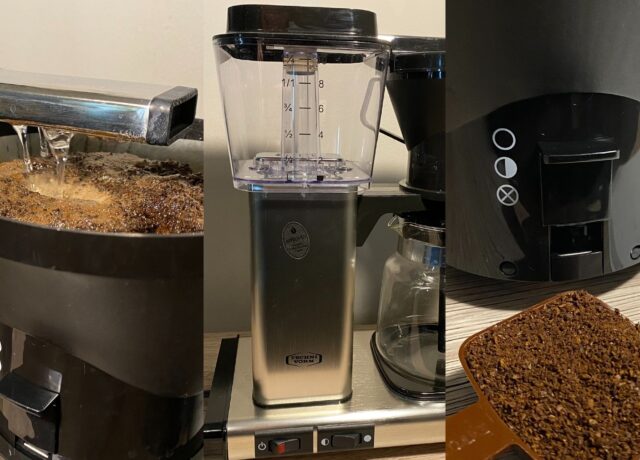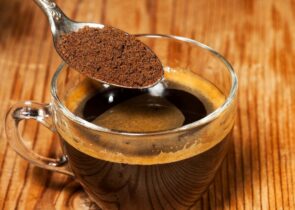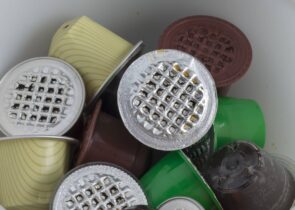We know this might sound like a joke, but we promise it’s not. And this Vietnamese coffee drink might just be a new fave!

Read on for the full low down on egg coffee, from its origins to how it’s made. So let’s crack on and get into it!
The Origin
Egg coffee originated in 1940s Vietnam. The story goes that a bartender. in Hanoi whisked eggs into his coffee because he couldn’t get his hands on any fresh milk. Shockingly enough, the bit of improvisation turned out to be a stroke of genius.
The resultantly decadent and delightful drink inspired the bartender to open a coffee shop called Cafe Giang, featuring the egg coffee (cà phê trúng). And the unique drink has been wildly popular since then!
To the States
So you may be wondering how this egg-citing drink made its way onto the coffee trend scene. Well, that started in June 2013 when Sara Leveen and Ben Lowell, took a trip to to Vietnam. After falling in love with the cuisine and–you guess it– egg coffee from Cafe Giang, they. opened their own restaurant in East Village in NYC called Hanoi House.
Since then, Manhattan has been hooked. And those with their fingers on the coffee trend pulse have been curious to try.
Non-Vietnamese Variation
Swedish Egg Coffee
Also called Norwegian or Scandinavian egg coffee, this is another variant of egg coffee that involves using the entire egg, including the shell. You simply mix the egg with your coffee grounds, add the mix to boiling water, dose it with cold water, filter, and enjoy!
Like Vietnamese egg coffee, Swedish egg coffee is also well-loved for its lack of bitterness. However, it is also quite smooth with a pleasant, toasted-cheese aftertaste. (Don’t knock it before you try!)
This method of making egg coffee has become more popular on the coffee trend
A Bit on Eggs
Albumen’s (egg whites’) proteins break apart when subjected to high heat (read: boiling). Once broken down, the proteins rebind to other macromolecules that cause bitterness and other impurities.
So, surely you can guess why this might be an interesting addition to coffee– a rather bitter beverage. When the eggs are added and chemistry does its thing, you’re left with a mellowed flavor and a serious caffeine kick.
Brewing Vietnamese Egg Coffee
Unfortunately, Vietnamese egg coffee isn’t particularly widespread outside of Vietnam. You can find it in Manhattan and one or two other shops scattered about. However, for the most part it has remained a treat primarily brewed at home.
But don’t worry, while where can’t tell you where to get it. We CAN tell you how to make it.
If you want to got the simple route, you can simply brew some Robusta-heavy blend with some hickory notes in whatever you have on hand. Whether it’s an espresso machine, percolator, Aeropress, etc, doesn’t matter too much.
Some people even suggest simply using instant coffee! The pull of egg coffee’s unique chemistry relies on creating a unique play between a super sweet foam and a subtle coffee. So while normally we’d prefer freshly ground Arabica beans, instant would actually be an appropriate choice on this one.
However, if you want to go a more authentic route, we’ve included a recipe with instructions on using a Vietnamese coffee filter for brewing. Brewing egg coffee at home can seem a tad complex at first glance, but just make sure to read first and execute second. We’re sure you can handle it!
Tools and Ingredients:
- 1 tbsp Vietnamese coffee (Cafe Du Monde Coffee is a popular alternative, but anything with a high Robusta content will work fine)
- 3-4 cups of water (boiling)
- 3 tbsp sweetened condensed milk
- 1 tsp sugar (Or one packet of vanilla sugar)
- 1/2 tsp vanilla (optional)
- 2 eggs
- Vietnamese Coffee Filter (Or 4-6 oz. of brewed coffee by another method)
- Electric whisk
- 1-2 bowls of hot water
- 2 coffee cups (1 for brewing and 1 for serving)
Instructions:
Make the Coffee.
- Get out your kettle or a small pot of water and boil it. (Needs to reach about 210 degrees)
- Place your coffee in a Vietnamese filter (Phin)
- Tamp the grounds (or simply shake the filter or press gently with a spoon)
- Place filter over one of the coffee cups
- Pour water from kettle into the filter and allow coffee to drip into the cup below
- You may place the coffee cup in a bowl of hot water to keep it warm
If using another brew method, skip to “Make the Egg Cream” potion.
Make the Egg Cream.
- Combine the egg yolks, sugar, vanilla, and sweetened condensed milk in a bowl
- Use the electric wire whisk to mix until thick and foamy (roughly 5 minutes)
Assemble the Drink
- Place your serving glass in a bowl of hot water. (This helps to ensure the egg topping is cooked)
- Pour 2/3 of your coffee into the glass
- Add egg mixture
- Pour the remaining 1/3 of the coffee on top
- Allow the cups to remain in the hot water for a few moments to ensure the egg components are cooked entirely
Serve and enjoy!
On The Taste
Honestly, most. people who try this whole egg-in-coffee deal don’t taste any eggy-ness at all. However, those that do say it is only at the very beginning of the drink. After. that, it’s like a while new world opens up.
Some have described Vietnamese egg coffee as “liquid tiramisu,” which is appropriate. Generally, the egg lends the drink a sweet, luxurious, ultra-creamy, and dessert-like quality. Even if you’re skeptical about that description, simply the flavor play between the sweet, foamy top and the more subdued coffee underneath should be enough to get you excited.
The layered vibe gives us a cappuccino feel, but the flavor is a whole new ballgame. So you’ll just have to give it a go yourself.
As for Swedish egg coffee, the flavor tends to be much more tame. It feels and looks a bit like a. dark tea. So if you’re into tea and want something with an extra strong caffeine kick, that style of brew is worth a shot.
Happy Caffeinating!







